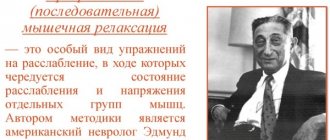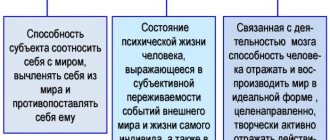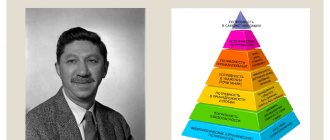To quickly switch from one emotional or mental state to another, you can use many methods: self-control, self-hypnosis, sports or sleep (active and passive discharge), tears, switching or turning off attention, rationalization, situation analysis, auto-training, attitude change, meditation, relaxation and other. And even prayers from the perspective of psychology are a method of self-regulation. This is how they help, because they allow a person to come to consciousness and find a rational solution. What other methods of self-regulation are there? Let's figure it out.
Direct and indirect methods
Direct methods
Direct methods of influencing the psyche include music. Yes, its effectiveness was experimentally proven back in the 19th century by V. M. Bekhterev, although intuitively music has been used for treatment purposes since ancient times.
The second method is libropsychotherapy, or treatment with special literature. Books draw a person into a fictional world, make them experience the emotions of the characters and distract them from their own experiences.
Indirect methods
- Work and sports are the most effective indirect methods. They provide relaxation, charge with positivity and distract from worries.
- Imagotherapy, or role-playing games, is a method of correcting a condition through personal changes. In the process, new character traits are formed, the personality structure and the experience of problems change.
- Suggestion and self-hypnosis. The spoken words are not criticized, but are accepted by default and become a person’s internal attitude, which corrects his activity.
As you may have noticed, these methods do not necessarily relate to self-regulation, but there are methods exclusively for independent use that develop the ability to self-government. For example, autogenic training. You will also learn about this from the article, but a little later.
Psychotechnicians for behavior correction tasks
Decreased arousal
Effectively use:
- distraction and switching of attention;
- goal setting (consider different options);
- physical relaxation;
- psychomuscular and autogenic training;
- breathing exercises for relaxation.
Resource Activation
Effectively use:
- autogenic training for mobilization;
- increased motivation;
- breathing exercises for activity;
- plot performances;
- memories of active emotional states and the situations that caused them;
- mental and sensory stimulation;
- heterosuggestion.
Mental desensitization
Effective:
- presentation of successful behavior;
- self-hypnosis of confidence and neutral attitude towards harmful factors;
- deliberate passive attitude.
Relieving Emotional Stress
Effective:
- listening to music;
- relaxation;
- substitution;
- rationalization;
- fantasy.
Recuperation
Effective:
- meditation;
- suggested dream;
- self-hypnosis for quick recovery.
Regulation of the autonomic system
Effective:
- auto-training;
- heteroregulation;
- breathing exercises.
What is mental self-regulation?
Mental self-regulation is a person’s control of his psycho-emotional state, which is achieved through a person’s influence on himself through the power of words (affirmations), mental images (visualization) and control of breathing and muscle tone (relaxation). Self-regulation methods are used in absolutely any situation, and they always produce the desired effect.
Thus, among the effects of mental self-regulation, three main ones can be distinguished:
- Activation associated with increased psychophysiological activity
- Recovery associated with reduced symptoms of fatigue
- Calmness associated with the elimination of emotional tension
In general, there are, of course, natural methods of mental self-regulation, including:
- Music
- Dancing
- Movement
- Massage
- Interaction with nature and animals
- Food
- Dream
However, these funds cannot be used in many situations, for example, during work, when a person feels tired and observes tension in his mental state.
But it is precisely timely mental self-regulation that can be perceived as a psychohygienic means that can prevent the accumulation of overstrain, restore strength, normalize the psycho-emotional state and mobilize the body's resources.
For this reason, the most accessible methods of natural self-regulation are also:
- Expressing compliments, praise, etc.
- Breathing fresh air
- Real or imagined bathing in the sun
- Concentrating on pleasant things, photographs and flowers
- Contemplation of landscapes and panoramas
- Muscle relaxation, stretching and other similar movements
- Reflections on the pleasant and good
- Humor, smile, laughter, etc.
But, in addition to natural ones, there are special methods of self-regulation, which in some cases are also called self-influence. It is about them that will be discussed further.
Autogenic training
The method was developed in 1930 by the German psychotherapist I. G. Schultz. In Russia, the method has been used and studied since 1950.
At first, auto-training was used only for the treatment of nervous disorders, but gradually began to be used for preventive purposes. Today this is a popular method of unloading the emotional and mental state in all areas and activities: study, work, relationships, and so on.
Auto-training in the modern sense even has its own subtypes:
- psychomuscular training (PMT);
- psychotonic training (PTT);
- psychoregulatory training (PRT).
But the basis of any auto-training is a relaxation mechanism, that is:
- mastering muscle relaxation techniques;
- development of skills for sensing heat and cold in the body;
- increasing concentration and volitional attitude towards the general condition of the body.
The purpose of auto-training is to relieve muscle and emotional tension, to instill in a relaxed state the development of volition.
I suggest you get acquainted with morning auto-training, which will charge you with energy and positivity for the whole day. You can perform it at any time, even immediately after waking up, while lying in bed. You just need to say the following words (installations). It is very important to speak on your own behalf in the present tense.
The text can be saved and printed as a reminder
Self-hypnosis
In fact, the technique described above is self-suggestion. With the help of these words, your faith in your own strength and the implementation of your plans increases. You get set up for success and understand that everything depends only on you.
Self-hypnosis is always positive statements in the first person, spoken in the present tense. You can come up with your own up-to-date and customized settings. Self-hypnosis directly affects the psychophysiology of the brain, forces it to concentrate on the goal.
There are several principles for constructing phrases. You are addressing the subconscious, so it is imperative to follow them.
- Use positive and affirmative phrases and avoid “not” and “never”. For example, instead of “my head doesn’t hurt,” say “the pain has left my head.”
- Maximum specificity. Don't skimp on your words and sentences. Break a big goal into small ones. For example, “I am successful” is a common phrase. Decipher what this means in your mind.
- Try to replace abstractions. For example, not “the head has passed,” but “the forehead has cooled.”
- Do not complicate the wording, use simple words, most importantly, understandable to you.
- One phrase – maximum 4 words.
- Always only the present tense. The subconscious perceives this as already accomplished, and what is said actually happens.
Drawing and sculpting
By engaging in drawing, modeling, and other types of creativity, you open the way to the unconscious, remove the barriers put up by your helpful consciousness. At the same time, internal tension goes away, you give your creation the energy that used to boil inside you.
There are many techniques in art therapy, here are a few:
- Draw your mood, state. Take paints and pencils for this. It is better to make the drawing in color.
- Arm yourself with simple pencils of varying softness, try to express your attitude to events and the world around you using graphics.
- Make your feelings out of plasticine. If there is a lot of negativity in them, break the resulting figure and blind it again. Do this until you feel that positive energy is embodied in it.
Meditation
Meditation involves working with attention: relaxing it or, conversely, increasing concentration. The purpose of meditation is to relieve emotional stress and develop the ability to stop the flow of thoughts.
Focus on the score
Count slowly from 1 to 10, concentrating on each number. You shouldn't think about anything else. If you realize that your thoughts have again “fled away” into your problems, then start counting from the beginning. Count like this for a few minutes (without losing your way).
Focusing on emotions and mood
- Record your inner thoughts, inner speech.
- Stop her.
- Catch your mood and focus on it.
- Rate it: good, bad, sad, happy, average, upbeat.
- Now focus on your emotions. Imagine yourself in an elevated, joyful state. To do this, remember a joyful event in life, a pleasant image.
- Get out of the state of relaxation.
- Go through reflection, that is, evaluate your state and thoughts now and during the exercise.
Anchoring
The essence of the method is to determine the current problem, what resources are needed to solve it and where they can be found.
For example, you are divorcing your husband, you feel terrible, and you constantly catch yourself thinking that you are going through an emotional swing. Your course of action could be like this:
- Define your goal. Let's say you need to calm down and get through your divorce with dignity.
- Formulate what you need for this. For example, you need the support of a loved one and confidence in the future.
- Remember who supported you, what helped you feel calm in stressful situations. This could be a close friend, travel, yoga, a secure job.
- Imagine that in the current situation, that same friend is next to you. She inspires you and gives you strength.
- Remember the sensations that you experienced when you meditated, did exercises, looked down from the top of the mountains.
- Keep these memories to yourself. Let them give you energy now.
- If possible, get back to doing what you love.
Trainings
Perhaps the most popular psychological technique today. There are many trainers and people willing to undergo training. Trainings are divided into separate profiles covering narrow topics. For example, training to improve stress resistance is popular. Most often they are directed:
- to increase self-esteem (or decrease to the correct level if necessary), emotional stability, self-confidence;
- formation of motivation to achieve success and behavior strategies under stress.
Breathing exercises
There are many options for breathing techniques, but it is a mistake to believe that they are all aimed at slowing down mental reactions. On the contrary, there are exercises that activate the brain.
Relaxation exercises
The goal is to master conscious natural breathing, relieve muscle tension and tension, and calm emotions. I want to introduce you to some exercises.
"Rest"
Place your feet shoulder-width apart, straighten up, and inhale. As you exhale, bend down, relax your neck and shoulders (as if they were hanging calmly on their own). Stay in this position for 1-2 minutes. Breathe deeply, watch your breathing. Slowly straighten up.
"Conscious Breathing"
Sit comfortably and relax, but keep your back straight. Take your first shallow breath in and out. Then inhale and exhale a second time, but deeper. And for the third time, inhale with your whole chest, but exhale very slowly (one in three).
"Breathing under stress"
Breathing is rhythmic and combined with walking. The scheme is as follows: two steps - inhale, two steps - exhale. Gradually increase the duration of exhalation, that is, then it will be: two steps - inhale, three steps - exhale, and so on.
Arousal exercises
The purpose of the following exercises is to increase neuropsychic activity and activate resources.
"Lock"
Sit up straight, place your hands on your knees and clasp them together. Inhale and at the same time raise your arms up (palms facing up). Hold your breath for a couple of seconds, exhale sharply through your mouth and “drop” your hands on your knees.
"Getting ready for work"
You need to breathe according to a certain pattern described below. The first number is inhalation, the second (in brackets) is retention, the third is exhalation.
2(2)+2; 4(2)+4; 4(2)+5; 4(2)+6; 4(2)+7; 4(2)+8; 8(2)+5; 9(4)+5; 10(5)+5.
Sound motor exercises
Such exercises use sound in combination with singing to vibrate certain organs.
It is believed that the sound “i” vibrates the pharynx and larynx, the sound “s” vibrates the brain, “a” and “o” - the chest area, “e” and “ou” - the lungs, heart, liver, stomach.
Sound vibration has a beneficial effect on all organs, especially the cardiovascular system, and enhances the body’s protective and adaptive reactions.
To relieve mental stress and negative emotional states, it is recommended to hum the sound combination “m-pom-peeee”: “M - pom” is short, and “pee-ee” is extended.
It is known that facial muscles can influence a person’s emotional mood; Therefore, it is necessary to accustom yourself to constantly maintain a kind, pleasant expression on your face.
To learn how to relax muscles, you need to have them, therefore, daily physical activity increases the effectiveness of muscle relaxation exercises.
The next self-influence technique is to control the tone of skeletal muscles.
The ability to relax, relieve muscle tension that arises under the influence of mental stress, allows the body to get complete rest, quickly restore strength and relieve neuro-emotional tension. As a rule, it is not possible to achieve complete relaxation of all the muscles of the body at once. Therefore, it is recommended to sequentially relax various muscle groups in compliance with a number of rules.
Firstly, the task of the exercise is to realize and remember the feeling of a relaxed muscle in contrast to its tension.
Secondly, each exercise consists of 3 phases: “strain – feel – relax.”
In the initial phase, the tension of a selected muscle group increases smoothly, then the maximum tension is maintained for several seconds until the muscles tremble, and the tension is released abruptly (relaxation phase). It must be taken into account that a completely relaxed muscle seems to “sag”, and a feeling of heaviness arises in it.
Thirdly, slow tension corresponds to slow inhalation, relaxation synchronized with a free full exhalation.
Each exercise is repeated 3-4 times.
Skeletal muscle is one of the most powerful sources of brain stimulation. Muscle impulses can change its tone over a wide range. It has been proven that voluntary muscle tension helps to increase and maintain mental activity and inhibit undesirable reactions to an existing or expected stimulus. To relieve irrelevant or excessive mental activity, on the contrary, muscle relaxation (relaxation) is necessary. Experiencing negative influences, the body mobilizes to the maximum for intense muscular work. So you need to present him with such work. Sometimes 20-30 squats or the maximum possible number of push-ups on the floor will help relieve mental stress.
In other cases, differentiated auto-training of the “express method” type will be more effective. It consists of maximally relaxing those muscles whose work is not currently required. So, if when walking, mainly the muscles of the legs are tense, then you need to relax the muscles of the face, shoulders, and arms. While sitting, you should relax the muscles of your face, arms, shoulders, and legs.
Let's get acquainted with one of the unique methods of managing internal resources to unlock abilities, overcome stress and psychological barriers.
Technique 1. “Divergence of hands.”
Hold your hands comfortably and give a mental command to your hands so that they begin to move apart as if automatically, without muscle effort.
Choose a comfortable look for yourself that will help you achieve this movement.
Imagine, for example, that they repel each other like unipolar magnets, or choose some other image. Whatever is more convenient. You can start by spreading your arms with a normal mechanical movement, and then with an ideomotor movement.
In order for your will to “work” and your hands to begin to move apart, you need to remove the obstacle between the will and the body (create a connection between the will and the body), i.e. find a state of inner balance within yourself.
To do this, you need to relax internally and feel comfortable. Do what is most pleasant, go through the options (tilt or bow your head, take a deep breath or exhale, hold your breath for a moment, etc.), the main thing is to find this feeling of inner comfort, in which your will will begin to influence the automaticity of movement.
Can be done with eyes open or closed. If your hands get tired, lower them, shake them, then try again.
Technique 2. “Convergence of hands”.
Spread your arms to the sides in the usual way, and now tune in to their automatic reverse movement towards each other.
Repeat it several times. Try the first technique - arms to the sides.
Repeat the divergence and convergence of the hands several times, achieving continuity of movement. At the moment when your hands seem to get stuck, you can push them slightly. Or smile, or sigh. A smile relieves tension. If the desired state of internal relaxation has arrived, stay in this state to remember it.
Technique 3. “Levitation of the hand.”
Hands down. You can look at your hand, then you need to do it continuously, or close your eyes. Tune in so that your hand begins to rise, “float up”. Remember how astronauts’ arms and legs “float” in zero gravity? If that doesn't work, go back to techniques 1 and 2.
When the hand begins to float up, a lot of new and pleasant sensations arise. For the first time, it will cause a sensation so unexpected that it involuntarily makes you smile.
Technique 4. “Flight”.
If the hand begins to “float up”, then after a few seconds give the opportunity for the same “float up” for the second hand.
Let your hands “float up”. Let them rise like wings.
Help yourself with pleasant imagery. Imagine that your hands are wings! Wings carry you!
You are high - high above the ground! Clear sky! Towards the warm sun."
Allow yourself to open to your breath. Allow yourself to breathe freely. Allow yourself to feel the state of flight.
Technique 5. “Self-oscillations of the body.”
When performing Key Techniques, along with relaxation, the phenomenon of self-oscillation of the body usually occurs. This is natural - when a person is relaxed, he sways.
When the body self-oscillates, you can lower your arms and simply sway on the waves of this harmonizing biorhythm, like a child sways on a swing. You can close your eyes or leave them open: whichever is more pleasant.
This technique with self-oscillations of the body also trains coordination. A person with good internal coordination is more resistant to stress, less susceptible to external influences than others, has greater independent thinking, and quickly finds a way out in the most difficult situations. Therefore, exercises aimed at developing coordination also build resistance to stress.
Technique 6. “Head movements.”
Standing or sitting, we lower our heads, relaxing our necks, or throw our heads back, whichever is more pleasant, and, remembering the experience with ideomotor movements of the hands, we cause ideomotor turns of the head in a convenient direction.
If this does not work, we mechanically rotate our heads in a pleasant rhythm along the line of pleasant turning points. This is a rhythm in which you want to continue the movement, and the neck tension eases.
You can find a moment when you can kind of let go of your head, and then it will go on ideomotor - automatically.
It is necessary to avoid painful or tense points, and if they appear, they should be lightly massaged. When you find a pleasant turning point when moving your head, sometimes you want to leave your head there. A pleasant turning point is a relaxation point.
You can help yourself find relaxation and use the movement of your eyeballs, horizontal or vertical, to find what feels more pleasant to you.
If you perform these techniques before going to bed, then when you leave the state of self-regulation, tune in to a pleasant sleep, leave the procedure with a relaxed feeling, with drowsiness, with the desire to sleep.
The “Relaxation by Contrast” exercise will help discharge negative emotional states and maintain a cheerful mood. Here relaxation is achieved through tension. You need to tense, for example, your hands, and then relax them as much as possible.
Relaxation
The goal is to realize, find and relieve muscle tension; learn muscle control.
"Tension-relaxation"
Stand up straight, focus on your right arm and tense it. After a few seconds, release the tension. Do the same with your left hand, then with both at the same time. After - with the right leg, left leg, both legs, lower back, neck.
"Muscle Energy"
- Bend your right index finger as much as possible (without damaging it).
- Feel where the tension goes. The finger itself, the hand, the elbow, the neck?
- Now try to gradually ease the tension: in the neck, shoulder, elbow. But the finger is still bent and tense.
- Release tension from your other fingers. We don't touch the index finger.
- Managed? Release the tension from your index finger.
- Do the same with your left leg (press your heel into the floor, do not overdo it).
- Where does the tension go? Gradually relax, as in the case of a finger.
- After this, tense your back. I will make a reservation that this exercise is not suitable for people with a bad back (hernia, osteochondrosis). If your back is healthy, then bend over and imagine that a box is placed on your back.
- Where does the tension go? Gradually relax your entire body, last but not least your back.
Methods of self-regulation of emotional states article on the topic
Methods of self-regulation of emotional states
After the car participating in the race has reached the finish line, the mechanics carefully inspect it and repair it, bringing it into working condition. Unfortunately, people do not always behave so rationally in relation to their body and soul. Carrying out professional and family responsibilities, being under stress, we do not always have the opportunity and time to analyze our stressful state that has arisen as a result of interpersonal problems or conflicts, and to restore strength. However, no matter how busy we are, we can always find an opportunity to calm our own nerves and put ourselves in order. To do this, you need to master self-regulation methods that can be used in any situation: during business negotiations, during a short coffee break, after a difficult conversation with your boss or with relatives.
Self-regulation is the control of one’s psycho-emotional state, which is achieved by a person’s influence on himself using the power of words (affirmation), mental images (visualization), control of muscle tone and breathing. Self-regulation techniques can be used in any situation.
Regulation of nervous tension and constant monitoring of stress levels must be carried out by a person constantly and on a conscious level. This is especially important for representatives of stressful professions, for situations associated with high neuropsychic stress, as well as when the individual is prone to anxious behavior. Currently, more and more research suggests that taking care of health (physical and mental) should be an integral part of lifestyle. If one’s health deteriorates, a person can use various methods aimed at optimizing one’s own internal state.
Methods of mental self-regulation are aimed at changing the mental image of a life situation presented in a person’s mind in order to mobilize the processes of psychosomatic interaction, optimize the psycho-emotional state and restore full functioning.
The use of mental self-regulation techniques allows:
- reduce anxiety, fear, irritability, conflict; activate memory and thinking;
- normalize sleep and autonomic dysfunction;
- increase the efficiency of professional activities;
- teach techniques for independent formation of positive psycho-emotional states.
A person interested in maintaining health should have a number of methods and techniques in stock. Moreover, this set will be individual for each person, since there is no universal way to reduce tension. To understand whether a particular method is suitable or not for us personally, we should practice it for 1-2 weeks and analyze the strength of its effect on health. Only in this case can we choose methods that are effective for us.
At the end of the working day it is important:
- sum up what you did during the working day, and even if you tried to do more, praise yourself not only for the results obtained, but also for the efforts made to achieve goals (this must be done, despite the fact that the boss or colleagues may have been waiting more from you);
- when leaving work, “forget” about it: leave the working role of manager, administrator, accountant and remember your other roles. You can even say to yourself: “I’m not Elizaveta Petrovna - an accountant, now I, Lisa, am a lover of sports dancing.” It is clear that the higher the level of management, the more difficult it is to do this, since the very first mobile call of any employee will again remind them of their professional role. However, even small and very short breaks from “getting out of the working role” are positive for the brain. The important thing here is to control your consciousness in order to quickly catch yourself thinking about your “favorite” job. To switch attention faster, our “Elizaveta Petrovna” can listen to a cassette with music in the car, to which she usually does fitness, and even make possible micro-movements with her body. This can help you step out of your professional role.
Exercises for self-regulation
Special exercises aimed at regulating the mental state in a specific situation help to find calm. There are many such exercises developed; you can choose the one that is most convenient to use, quick and effective.
Some special exercises and ways to quickly calm down:
Breathing control is an effective means of influencing muscle tone and emotional centers of the brain. Slow and deep breathing (with the participation of the abdominal muscles) reduces the excitability of the nerve centers and promotes muscle relaxation, that is, relaxation. Frequent (chest) breathing, on the contrary, ensures a high level of body activity and maintains neuropsychic tension.
While sitting or standing, try to relax your body muscles as much as possible and focus on your breathing.
- On the count of 1-2-3-4, take a slow, deep breath (while your stomach protrudes forward and your chest remains motionless).
- Hold your breath for the next four counts.
- Then exhale smoothly to the count of 1-2-3-4-5-6.
- Hold your breath again before the next inhalation for a count of 1-2-3-4.
After just 3-5 minutes of such breathing, you will notice that your state has become noticeably calmer and more balanced.
Breathing exercises:
- "Sleeping Flower"
On 1-2-3-4 – inhale, on 1,2,3 – exhale.”
- "Unmilked Cow"
Participants perform the exercise as follows: take a deep breath, then sing (moo) a melody as they exhale.
- "Scent of Roses"
The group members take full breaths with their eyes closed, imagining a bouquet of roses in front of them. Holding your breath at the top, you need to catch a feeling of lightness and elation.
Methods related to the control of muscle tone and movement.
Under the influence of mental stress, muscle clamps and tension arise. The ability to relax them allows you to relieve neuropsychic tension and quickly restore strength. As a rule, it is not possible to achieve complete relaxation of all muscles at once; you need to focus on the most tense parts of the body.
- Exercise "Swinging"
In a standing or sitting position, you need to relax and tilt your head back so that it is comfortable, as if lying on a pillow. Close your eyes and begin to sway slightly, with a small amplitude from side to side, back and forth or in a circle. You need to find the most pleasant rhythm and tempo.
- Exercise “Relaxation point”
In a standing or sitting position, you need to relax your shoulders and lower your arms freely. Start slowly rotating your head in a circle. When you find the most comfortable position and want to stop, you need to do so.
After resting in this position, continue rotational movements. Rotating your head, imagine moving towards harmony, and at the point of relaxation feel the achievement of this goal.
- A positive effect can be achieved simply by shaking your hands well and quickly several times, as if shaking off water. Imagine that stress and nervousness are leaving your fingertips.
- To relieve tension and relax your muscles, you need to jump in place, as if shaking off snow.
- Exercise “Sunny Bunny”
The exercise is suitable for both adults and children. It is pleasant, playful, fun.
Take a comfortable position, sitting or reclining, relax all your muscles. Close your eyes and imagine yourself in a sunny meadow, beach, riverbank or other pleasant place where the sun is shining. Imagine how the gentle sun warms the body and, together with the sunlight, the body is saturated with peace and happiness.
A ray of sunshine ran across the lips and drew a smile, across the forehead, relaxing the eyebrows and forehead, sliding onto the chin and relaxing the jaw. The sun's ray runs over the body and relaxes all its parts in turn, gives peace of mind, and removes anxiety. You can add sounds of nature: splashing waves, birdsong, rustling leaves.
Methods associated with the impact of words
Verbal influence involves the conscious mechanism of self-hypnosis, and has a direct impact on the psychophysiological functions of the body. The formulations of self-hypnosis are constructed in the form of simple and brief statements, with a positive focus (without the particle “not”).
One of these methods of self-regulation is based on the use of self-orders - short, abrupt orders given to oneself. Use saproication when you are convinced that you need to behave in a certain way, but you have difficulty organizing your behavior accordingly. Tell yourself: “Talk calmly!”, “Be silent, be silent!”, “Don’t give in to provocation!” - this helps to restrain emotions, behave with dignity, comply with ethical requirements and rules of communication.
The sequence of working with self-orders is as follows:
Formulate a self-order.
Repeat it mentally several times.
If possible, repeat the self-command out loud.
Formula for increasing self-esteem and positive perception of others
I'm good
I, I, I'm good. I, I, I am calm. I, I, I'm healthy. I, I, I am healthy. I, I, I am cheerful. I, I, I am very smart. I, I, I am very kind. I, I, I am very strong. I love you.
Methods associated with the use of images
The use of images is associated with an active influence on the central nervous system of feelings and ideas. We don’t remember many of our positive feelings, observations, and impressions, but if we awaken the memories and images associated with them, we can relive them and even strengthen them. And if with words we influence mainly consciousness, then images and imagination give us access to powerful subconscious reserves of the psyche.
To use imagery for self-regulation:
- Specifically remember situations, events in which you felt comfortable, relaxed, calm - these are your resource situations.
- Do this in the three main modalities inherent in man. To do this, remember:
1) visual images of the event (what you see: clouds, flowers, forest);
2) auditory images (what sounds do you hear: birds singing, the murmur of a stream, the sound of rain, music);
3) sensations in the body (what you feel: the warmth of the sun's rays on your face, splashes of water, the smell of blossoming apple trees, the taste of strawberries).
- When feeling tense or tired:
1) sit comfortably, with your eyes closed if possible;
2) breathe slowly and deeply;
3) remember one of your resource situations;
4) live it again, remembering all the visual, auditory and bodily sensations that accompanied it;
5) stay inside this situation for several minutes;
6) open your eyes and get back to work.
In conclusion, we note the following. In the work to prevent neuropsychic tension, a primary role should be given to the development and strengthening of cheerfulness, faith in people, and constant confidence in the success of the business one has undertaken.
Duration of exercises: from one to fifteen minutes. They can be performed in combination, several times a day.
Simple exercises can restore a sense of joy in life, self-confidence, calm down and achieve peace of mind.
Parents are often concerned about their children’s lack of composure, excessive activity, or, on the contrary, isolation, timidity, and often aggressiveness and tearfulness. A balanced, joyful child suddenly becomes conflicted and restless. All these are signs of internal psycho-emotional stress, or a consequence of some “childhood” problem that adults have not yet figured out. How to help a child in such moments? The most correct thing is to teach him to help himself, that is, to introduce him to methods of self-regulation. The child can do some exercises on his own, while in others he should be helped by parents or adults.
“GET YOURSELF IN HANDS” (for children from 5 years old)
The child is told: “As soon as you feel that you are worried, you want to hit someone, throw something, there is a very simple way to prove your strength to yourself: clasp your elbows with your palms, press your hands tightly to your chest - this is the pose of a self-possessed person.”
“GROW INTO THE GROUND” (for children from 5 years old)
You need to tell the child: “Try to press your heels very, very hard on the floor, clench your hands into fists, clench your teeth tightly. You are a mighty, strong tree, you have strong roots, and no winds are afraid of you. This is the pose of a confident person.”
"YOU ARE A LION!" (for children from 5 years old)
The child is told: “Close your eyes, imagine a lion - the king of animals, strong, powerful, self-confident, calm and wise. He is handsome and self-possessed, proud and free. This lion has the same name as you, he has your name, your eyes, your arms, legs, body. Leo is you!
"WAKE UP, THIRD EYE!" (for children from 5 years old)
The child is told: “A person sees not only with his eyes. Wisdom and intelligence, endurance and calmness can awaken in your third eye. Extend your index finger, tense it and place it on your forehead between your eyebrows above your nose. Here is your third eye, the eye of wisdom. Massage this point, saying: “Wake up, third ointment, wake up, third eye...” 6-10 times.
“RELIEF FATIGUE” (for children from 5 years old)
You need to tell the child: “Stand up, spread your legs wide, bend them slightly at the knees, bend your body and lower your arms freely, straighten your fingers, bow your head to your chest, open your mouth. Rock slightly to the sides, forward, backward. Now shake your head, arms, legs, and body sharply. You’ve shaken off all your fatigue, just a little bit is left, repeat again.”
“CHARGED OF CHARGE” (for children from 5 years old)
You need to tell the child: “Sit freely. Stretch your arms forward and prepare two fingers: thumb and index. Take them by the very tips of the ears - one on top, the other on the bottom of the ear. Massage your ears, saying: “Ears, ears hear everything!” -10 times in one direction and 10 in the other. Now put your hands down, shake your palms. Prepare your index finger, extend your hand and place it between your eyebrows above your nose. Massage this point the same number of times with the words: “Wake up, third eye!” Shake your palms, gather your fingers into a handful, find a hole at the bottom of your neck, put your hand there and say: “I breathe, breathe, breathe!” - massage the hole 10 times in one direction and 10 times in the other. Well done! You see, you hear, you feel!” Caution: an adult monitors the force of pressure on important points of vital activity and the correct location of the points.
Involuntary visualization
The goal is distraction from stressful situations and obsessive thoughts by means of involuntary attention against the background of relaxation.
- Close your eyes and look as if at the back of your eyelids. In a couple of minutes you will see dots, spots, lines.
- After some time, these spots may begin to form into some images, faces, objects.
- It is important to do this in a state of relaxation, then gradually obsessive thoughts will come out through these barely noticeable images.
- Keep your face and body relaxed. Don’t try to draw something yourself, but just look, as if from the outside, at what appears.
- This exercise requires skill. During the first practices, attention often slips; you need to consciously return it to the points.
- Then open your eyelids and assess your condition.
"Anchoring" method
A self-regulation technique associated with conditioned reflexes, that is, the “stimulus-reinforcement” scheme. Surely it has happened to you that a song or smell evoked specific memories and emotions. This is your “anchor”, which can be positive or negative. Someone's voice or gesture can also be an anchor.
Self-regulation in the form of anchoring involves the conscious setting of “anchors” and their reasonable use, that is, the release of the necessary resource in a stressful situation.
- Identify a situation in which you need resources.
- Determine specifically what resource is needed (confidence, courage, determination, etc.).
- Ask yourself: “If I had this resource now, would I really use it?” If the answer is yes, then you made the right choice and you can move on. If you make a mistake, then select a new resource.
- Remember a situation when you had this resource.
- Choose three “anchors”: what you hear, what you feel, what you see.
- Change your position in space, reproduce in your memory the situation when you had the resource, achieve a peak state.
- Exit it and return to your original place.
- Recreate the situation again and attach three “anchors”. Hold them as long as needed.
- Check the success of the operation: “turn on the anchors”. Are you getting into the desired state? If yes, then everything is fine. If not, repeat the previous point.
- Determine the signal that will hint to you in a difficult situation that it is time to “drop anchor.”
- If necessary, immediately create a complex of evoked states, emotions, and feelings.
Methods of self-influence
So, methods of self-influence can be divided into:
- Related to verbal influence
- Movement related
- Breath-related
Let's look at each of them in more detail.
Methods of self-regulation associated with verbal influence
The impact of words is different in that it activates the conscious mechanisms of self-hypnosis. As a result, a direct effect on the psychophysiological functions performed by the body begins. As a rule, verbal self-suggestions are formulated through short and simple statements that do not use the particle “not.”
Verbal influence can be expressed in self-orders, self-programming and self-approval.
Self-orders
Self-orders are short and abrupt orders that a person gives to himself. A person should use self-orders when he is convinced that it is necessary to behave in a specific way, but there are some problems with organizing his behavior in this regard.
You should tell yourself something like: “Speak calmly!”, “Be silent, be silent!” or “This is just a provocation. Stop reacting!” - such self-importances will allow you to restrain your emotions and behave within the framework of decency, ethics and dignity.
You should work with self-orders like this:
- Self-order is formulated
- The self-command is repeated to oneself several times
- Self-order is pronounced out loud (if possible)
Self-programming
In some life situations a person needs to “look back”, i.e. Refresh your memory of past successes in similar situations. This can become an indicator that there are hidden volitional, intellectual, spiritual and even physical reserves in him, as well as indicate opportunities and give self-confidence.
You can set yourself up for success using self-programming. It is done like this:
- The person must remember a situation in which he has already successfully dealt with similar problems
- Then you need to use affirmation. To enhance the effect, you can give it the current tense, for example: “Now I can do this”, “Today I will be as confident as possible”, “Now I will be persistent as never before”, etc.
- After this, you should repeat the received affirmation several times (mentally, in front of a mirror, or simply out loud, if the situation allows)
Self-approval
Quite often, people cannot receive a positive assessment of themselves and their actions from the outside, which is very painful in situations with neuropsychic stress. A lack of positive evaluation can cause irritability, nervousness and even aggressiveness. For this reason, a person must encourage himself.
For self-approval or self-encouragement, you should simply say certain words to yourself, such as: “I’m super!”, “Well done!”, “Handsome!”, “Clever!”, “It worked,” etc.
Afterword
Self-regulation really works. The body and brain are one, as psychosomatics has long shown. Therefore, you should not be skeptical about exercises that seem to have little to do with psychology.
But you need to approach the development of self-regulation carefully and following a number of rules:
- clearly see the goal and stick to it;
- the process of developing a skill must be consistent and purposeful;
- be prepared for high energy costs, especially at the beginning of the journey;
- despite consistency and purposefulness, adhere to diversity in the development of self-regulation methods.
It is impossible to create one set of self-regulation methods for a lifetime, since the very ability to self-government is associated with such changeable elements as needs, personality and character traits, motives, and more. You can read more about the intricacies of developing self-regulation and what it is in the article “Self-regulation - what is it in psychology. Concept, types and functions."
The techniques presented in the article were borrowed from the book by T. G. Volkova “Workshop on the psychology of self-awareness and self-regulation: methodological materials for the course.” You can find this literature and learn more about other techniques and methods of self-regulation.









